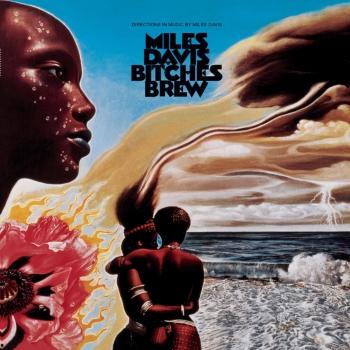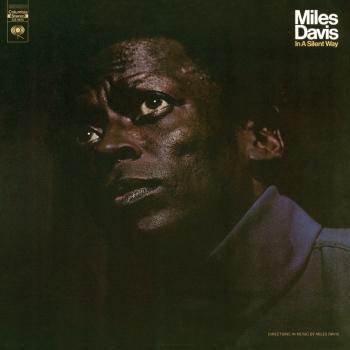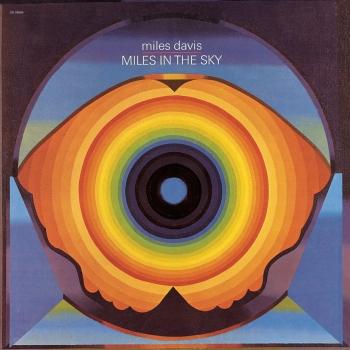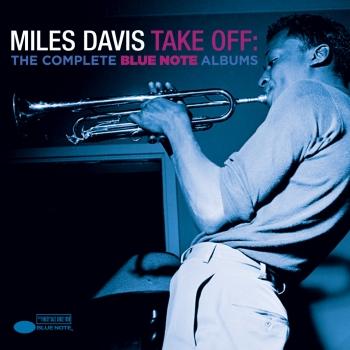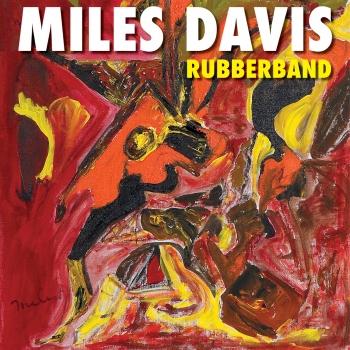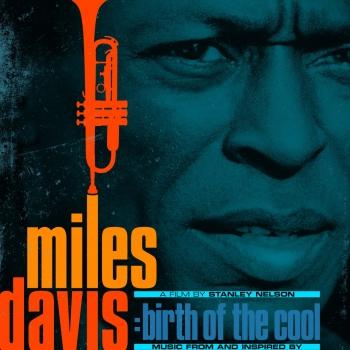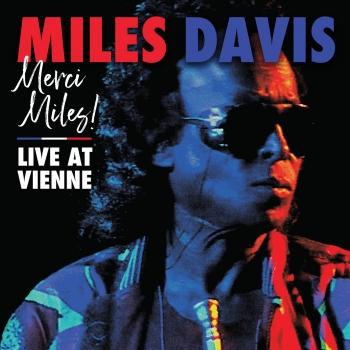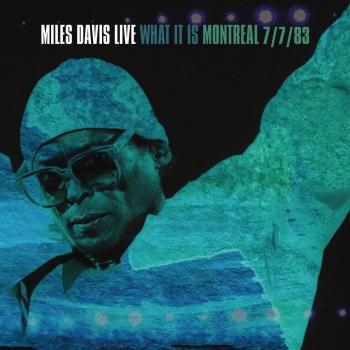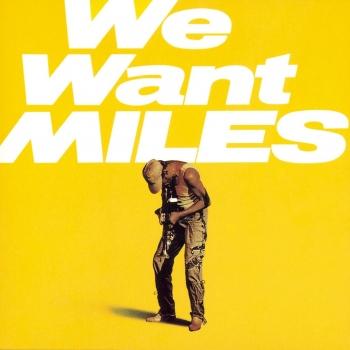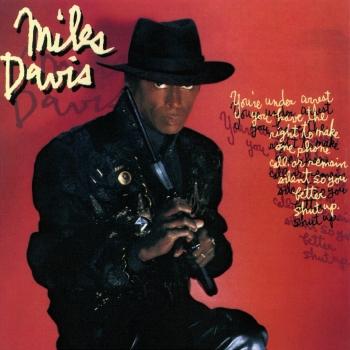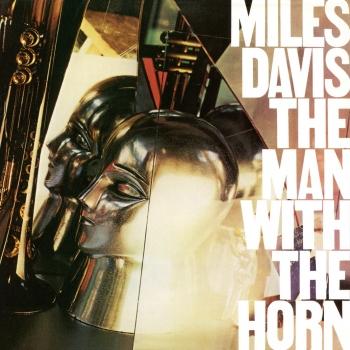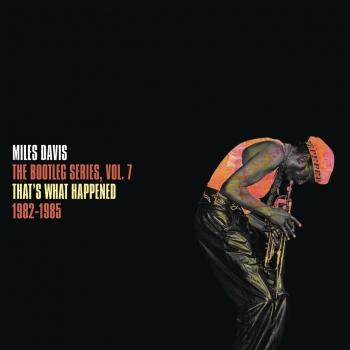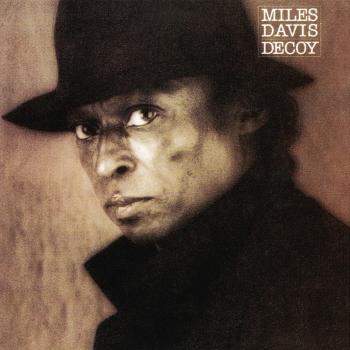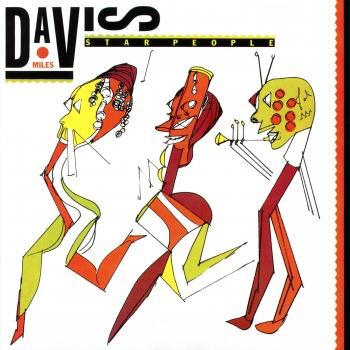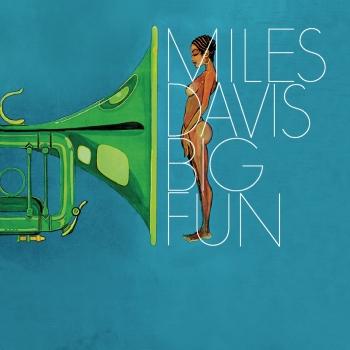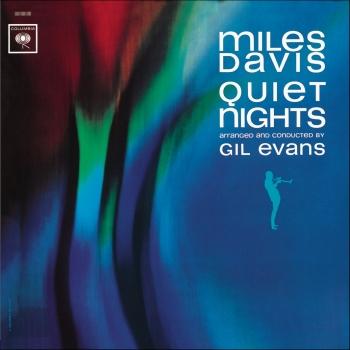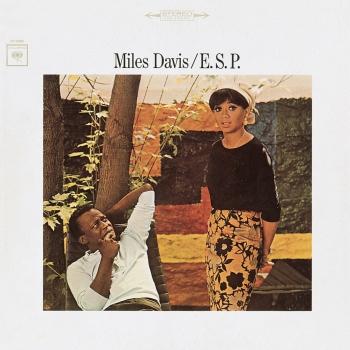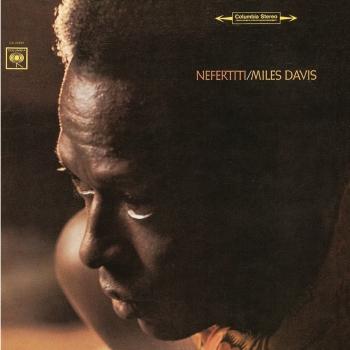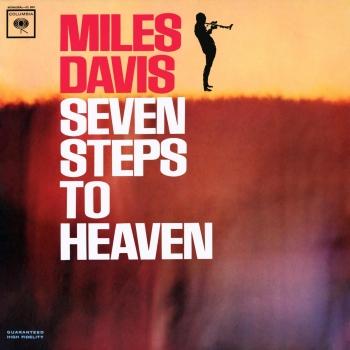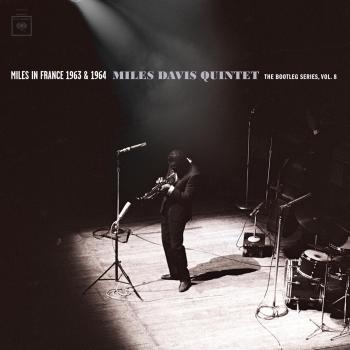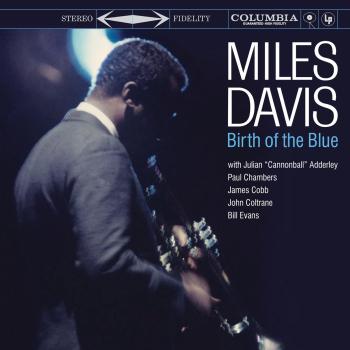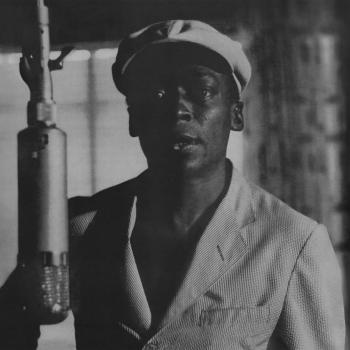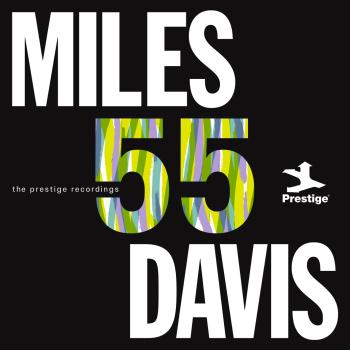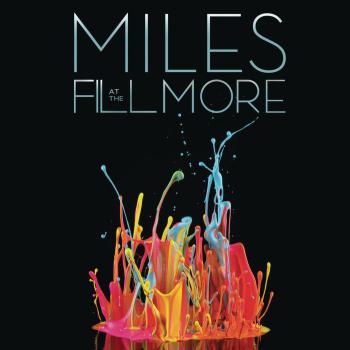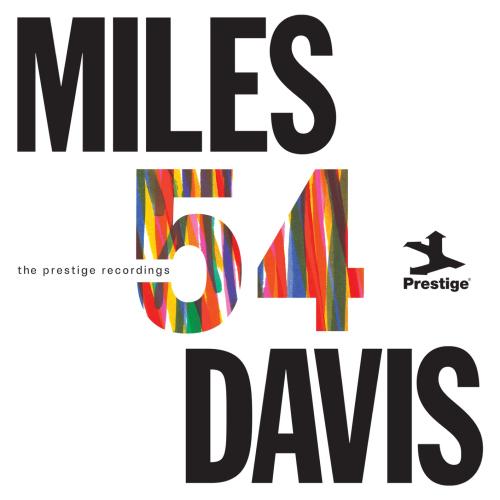
Miles '54: The Prestige Recordings (Mono Remastered 2024) Miles Davis
Album info
Album-Release:
2024
HRA-Release:
22.11.2024
Album including Album cover
I`m sorry!
Dear HIGHRESAUDIO Visitor,
due to territorial constraints and also different releases dates in each country you currently can`t purchase this album. We are updating our release dates twice a week. So, please feel free to check from time-to-time, if the album is available for your country.
We suggest, that you bookmark the album and use our Short List function.
Thank you for your understanding and patience.
Yours sincerely, HIGHRESAUDIO
- 1 Four (Remastered 2024) 04:03
- 2 Old Devil Moon (Remastered 2024) 03:25
- 3 Blue Haze (Remastered 2024) 06:12
- 4 Solar (Remastered 2024) 04:45
- 5 You Don't Know What Love Is (Remastered 2024) 04:24
- 6 Love Me Or Leave Me (Remastered 2024) 06:58
- 7 I'll Remember April (Remastered 2024) 07:55
- 8 Blue 'N' Boogie (Remastered 2024) 08:18
- 9 Walkin' (Remastered 2024) 13:28
- 10 Airegin (Remastered 2024) 04:59
- 11 Oleo (Remastered 2024) 05:14
- 12 But Not For Me (Take 1 / Remastered 2024) 05:45
- 13 But Not For Me (Take 2 / Remastered 2024) 04:37
- 14 Doxy (Remastered 2024) 04:54
- 15 Bags' Groove (Take 1 / Remastered 2024) 11:14
- 16 Bags' Groove (Take 2 / Remastered 2024) 09:22
- 17 Bemsha Swing (Remastered 2024) 09:33
- 18 Swing Spring (Remastered 2024) 10:45
- 19 The Man I Love (Take 1 / Remastered 2024) 08:30
- 20 The Man I Love (Take 2 / Remastered 2024) 07:56
Info for Miles '54: The Prestige Recordings (Mono Remastered 2024)
Newly remastered! Released to celebrate the 70th Anniversary of these sessions and the 75th Anniversary of Prestige Records.
The collection is a new, 20-track compilation, collecting genre-defining recordings from the music icon’s 1954 output, including music from classic albums Miles Davis with Sonny Rollins, Miles Davis Quintet, Miles Davis All Star Sextet, and Miles Davis Quartet (all originally issued via Prestige Records).
Featuring an all-star cast of musicians, including Sonny Rollins, Thelonious Monk, Milt Jackson, Kenny Clarke, Art Blakey, and Horace Silver, Miles ’54 blends originals by the influential jazz icon, with popular ballads and compositions by his legendary sidemen.
1954 was a watershed year for Miles Davis. Ten years into his celebrated career, the trumpeter, composer, and bandleader was on the precipice of international fame and more focused than ever. Throughout the year, Davis entered Rudy Van Gelder’s studio for five landmark sessions—each of which would find him honing his sound, maturing as a leader, and collaborating with the era’s brightest rising stars. The resulting recordings would catapult Davis’ career to the next level and set the tone for the mid-late ’50s post-bop scene.
The release of Miles ’54 not only coincides with the 70th anniversary of these recordings but also the 75th anniversary of Prestige Records, the venerable independent jazz label founded by producer Bob Weinstock. Launched in 1949, Prestige found itself at the forefront of the genre: ushering in the cutting-edge sounds of bop, hard bop, soul jazz, and beyond, while developing the careers of such iconic artists as John Coltrane, Thelonious Monk, Stan Getz, Sonny Rollins, and, of course, Miles Davis.
In 1954, after ten long years of building a name for himself, Miles Davis “…transformed himself from a member of a tight brotherhood of players into a leader with an immediately recognizable sound that the world came to know and want,” writes Ashley Kahn. Indeed, just a decade earlier, a fresh-faced, 18-year-old Davis had arrived in New York City from St. Louis to study at the prestigious Juilliard School of Music. What followed was the development of one of modern music’s most important figures, thanks to sideman duties with the likes of Charlie Parker, Dizzy Gillespie, and Coleman Hawkins, non-stop gigging, and the assembly of his first band—a nonet—whose recordings would eventually be released as The Birth of Cool (1957).
In 1954, after returning home to the Midwest to address his struggles with substance abuse, Davis returned to New York with a newfound sense of well-being and focus. His timing couldn’t have been better. “As post-bebop jazz grew and developed during this period, so did its impact. It became part of an intensely creative, spontaneous period in American culture, the soundtrack to the zeitgeist of the ’50s, inspiring visual artists and writers alike,” notes Kahn. “Jazz was being embraced differently: as a sophisticated art music, more cutting-edge than mainstream.”
The year found Davis headlining major New York venues, including Birdland and Basin Street, while he frequently shared top-billing with stars like Gillespie, Dinah Washington, and Chet Baker. After re-signing with Prestige Records (following his first contract in 1951), Davis was also making multiple trips to Rudy Van Gelder’s storied Hackensack, NJ studio. It was there, over the course of 1954, that he would record five landmark sessions.
These dates, in which Davis collaborated with a collective of uber-talented sidemen (a precursor to his First Great Quintet), also found him maturing as an artist. “Miles’ performances on his 1954 quartet and quintet sessions for Prestige reveal…a heightened level of confidence in his bandleading and in his playing, with a more expansive feel for color, timbre and even atmosphere in his palette,” explains Kahn.
The first of these recordings took place on March 15th, during which Davis—accompanied by Percy Heath (bass), Art Blakey(drums), and Horace Silver (piano)—performed pop standards like “Old Devil Moon” as well as such originals as the lighthearted “Four” and the bluesy “Blue Haze.” Weeks later, on April 3rd, Davis returned with Silver and Heath, plus drummer Kenny Clarke and alto saxophonist Dave Schildkraut to record his own “Solar,” plus such upbeat standards as “Love Me or Leave Me” and “I’ll Remember April.”
In his track notes, which originally appeared on 1988’s Chronicle: The Complete Prestige Recordings, 1951–1956, Dan Morgenstern points out, “This was no slapdash blowing date, but a session more cohesive than most organized groups could manage. And it is certainly worthy of notice that this was the first Miles Davis session (and quite possibly the very first Prestige session) recorded by…[definitive bebop engineer Rudy Van Gelder].” The date is also notable for Davis’ extensive use of the cup mute on his trumpet—a signature technique that he would employ for the remainder of his lengthy career.
The session that followed on April 29th, however, proved to be a historic moment in jazz, in which J. J. Johnson (trombone), Lucky Thompson (tenor sax), Silver, Heath, and Clarke performed two extended jams: Gillespie’s “Blue ’n’ Boogie” and the blues classic “Walkin’.” Quoting pianist Dick Katz, Morgenstern refers to this session as “An amazing seminar…a sort of summing up of much of what had happened musically to the players involved during the preceding ten years.” In his own words, Morgenstern calls the masterful rendition of “Walkin’” a “cornerstone of the hard bop movement.” Kahn, meanwhile, adds that the performance “…incorporated most of the elements that would define Miles’ later ’50s recordings.”
On June 29th, Davis was joined by tenor saxophonist Sonny Rollins for what Morgenstern refers to as “One of several encounters between Miles and Sonny Rollins, and in some ways the most satisfying.” The pair, joined by Silver, Heath, and Clarke, recorded three iconic Rollins compositions: “Oleo,” “Airegin,” and “Doxy,” as well as the Gershwin classic, “But Not for Me.”
The final session of the year, which took place on Christmas Eve, was certainly the most famous—featuring an awe-inspiring line-up of Thelonious Monk (piano) and Milt Jackson (vibraphone), alongside Heath, and Clarke (aptly released as Miles Davis All Stars, Vol. 1 and Vol. 2 the following year). With the addition of alternate takes, this complete session, Morgenstern writes, “can serve as a graduate seminar on the art of improvisation.” Featuring originals by Davis (“Swing Spring”), Jackson (the soon-to-be-standard, “Bags’ Groove”), and Monk (“Bemsha Swing”), the sounds that the trumpeter achieved on this date were near-perfection—a culmination of sorts of Davis’ work—not only accomplished over the year, but the previous decade. By the end of the year, Kahn adds, “Miles’ sound reached a level of maturity that captured mainstream ears. It was a connection that endured.”
Indeed, in the immediate months and years to follow, Davis’ profile grew substantially. In 1955, he ascended to new heights with the assembly of his First Great Quintet (featuring Red Garland, Paul Chambers, Philly Joe Jones, and John Coltrane)—a unit that became the dominant small jazz group of the late ’50s and helped define the hard-bop genre. In later decades, he would continue to push the limits of jazz music—shaping the sounds of post-bop and fusion, while experimenting with electronic elements, funk, rock, pop, and African rhythms well into the late ’80s. Today, 33 years after his death, Davis holds a mighty legacy as one of the most important figures of 20th-century music, with an influence that expands far behind the realm of jazz.
Miles Davis
Digitally remastered by Paul Blakemore
Trumpeter Miles Davis grew up in East St. Louis, Illinois, just across the river from St. Louis, Missouri. His parents were affluent, and had the means to support his musical studies as a boy. He began playing the cornet at age nine, and received his first trumpet at around twelve or thirteen. He studied classical technique, and focused mainly on using a rich, clear tone, something that helped define his sound in later years.
As a teenager, he played in various bands in St. Louis, which was rich with jazz, as big bands often stopped there on tours throughout the Midwest and southern states. The most important experience he had was when he was asked to play in the Billy Eckstine band for a week as a substitute. The group included Charlie Parker, Dizzy Gillespie, and Sara Vaughan. After playing with these stars, Davis knew he had to move to New York to be at the heart of the jazz scene.
In Pursuit of Parker:
In 1944 Davis moved to New York City where he had earned a scholarship to study trumpet at the Juilliard School of Music. Upon arriving however, he sought after Charlie Parker, and meanwhile spent all of his time in jazz clubs listening to bebop. He was transfixed on the music, and grew utterly bored with his classical studies. After less than a year at Juilliard, he dropped out and tried his hand at performing jazz.
Although not particularly stunning, his playing was good enough to finally attract Charlie Parker, and Davis joined his quintet in 1945. He was often criticized for sounding inexperienced, and was compared unfavorably to Dizzy Gillespie and Fats Navarro, who were the leading trumpeters at the time. Both boasted stellar technique and range, neither of which Davis possessed. In spite of this, he made a lasting impression on those who heard him, and his career was soon set aloft.
Cool Jazz and a Rise to Fame:
Encouraged by composer and arranger Gil Evans, Davis formed a group in 1949 that consisted of nine musicians, including Lee Konitz and Gerry Mulligan. The group was larger than most bebop ensembles, and featured more detailed arrangements. The music was characterized by a more subdued mood than earlier styles, and came to be known as cool jazz. In 1949 Davis released the album Birth of the Cool (Captiol Records).
Change of artistic direction became central to Davis’ long and increasingly influential career. After dabbling in hard bop as a leader on four Prestige recordings featuring John Coltrane, he signed with Columbia records and made albums that featured Gil Evans’ arrangements for 19-piece orchestra. These were Miles Ahead, Porgy and Bess, Sketches of Spain, and Quiet Nights. He rose in popularity with these recordings, in part due to his signature sound, which he often enhanced by using a Harmon mute.
Kind of Blue and Beyond:
In 1959 Davis made his pivotal recording, Kind of Blue. It was a departure from all of his previous projects, abandoning complicated melodies for tunes that were sometimes only composed of two chords. This style became known as modal jazz, and it allows the soloist expressive freedom since he does not have to negotiate complex harmonies. Kind of Blue also featured John Coltrane, Cannonball Adderley, and Bill Evans. The album is one of the most influential in jazz, and is Columbia Records’ best-selling jazz record of all time.
In the mid 1960s Davis changed directions again, forming a group with Herbie Hancock, Wayne Shorter, Tony Williams, and Ron Carter. This group was known for the excellence of each individual member, and also for its unique performance approach. Each night the tunes would sound different, as the musicians would sometimes only loosely adhere to the song structures, and often transition from one right into the next. Each player was given the chance to develop his solos extensively. Like all of Davis’ previous groups, this quintet was highly influential.
Late Career:
Despite health problems, drug addiction, and strained personal relationships, Davis continued to play, changing his approach with each new project. In the late 60s and 70s, he began to experiment with electronic instruments, and grooves that were tinged with rock and funk music. Two famous recordings from this period are In a Silent Way and Bitches Brew. By the time the 1980s rolled around, Davis was not only a jazz legacy, but a pop icon, whose music, persona, and fashion style were legendary.
Davis died in 1991, as perhaps the most influential jazz artist ever. His vast body of work continues to be a source of inspiration for today’s musicians. (Jacob Teichroew, About.com Guide)
This album contains no booklet.










